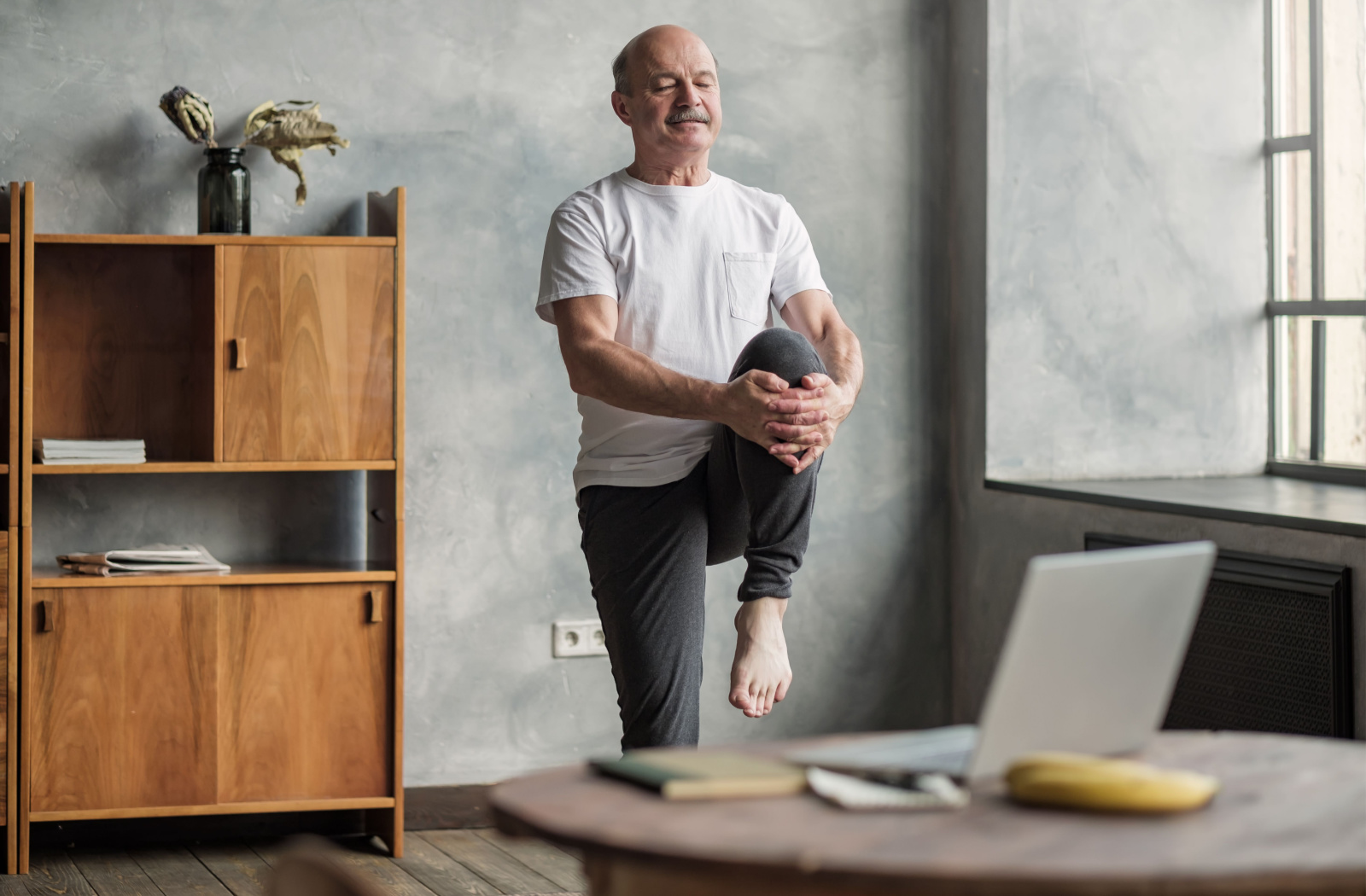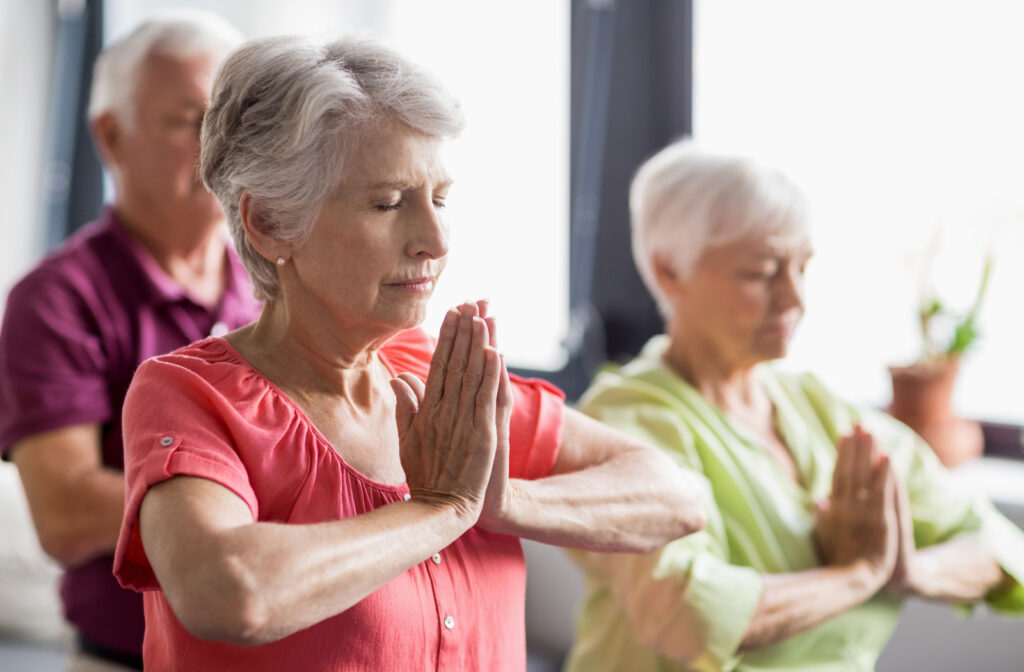As people age, their bodies undergo several changes, and one of the most significant changes is a decrease in flexibility. However, it’s crucial for seniors to maintain their flexibility, as it is vital to their overall health and well-being.
Flexibility is particularly important for seniors as it aids in the prevention of injuries and helps maintain mobility and independence. Enhanced flexibility allows for a greater range of motion in the joints, which can directly translate into better balance, thereby reducing the risk of falls.
Additionally, improved flexibility can alleviate common age-related ailments such as backaches and joint stiffness. Thus, regular flexibility exercises are key to promoting healthier, more active aging.
What is Flexibility?
Flexibility refers to the ability of muscles and joints to move through their full range of motion. It is determined by various factors such as joint structure, muscle elasticity and length, and surrounding connective tissues. As we age, these factors change, leading to a gradual decrease in flexibility. This decline can lead to reduced mobility and increased risk of injury without proper attention and exercise.
In order to maintain flexibility, seniors need to incorporate stretching exercises into their daily routine. Regular stretching can help improve joint mobility, muscle strength and endurance, and overall physical function. It also increases muscle blood flow, promoting better circulation and preventing stiffness.
Benefits of Flexibility for Seniors
Apart from reducing the risk of injuries, maintaining flexibility offers a host of other benefits for seniors. These include:
- Improved Posture: Tight muscles can cause poor posture, leading to back pain and discomfort. Stretching helps lengthen and loosen these muscles, improving overall posture and reducing pain.
- Enhanced Performance in Daily Activities: Flexibility aids in performing daily activities such as reaching for objects or bending down easily and without strain.
- Better Balance: Flexibility exercises that target the legs and core can improve balance, reducing the risk of falls in seniors.
- Relieves Aches and Pains: Regular stretching can help alleviate common age-related aches and pains, such as backaches and joint stiffness.
- Reduces Stress: Stretching releases muscle tension and helps relax the body, promoting mental well-being and reducing stress.
- Increased Range of Motion: By improving flexibility, seniors can have a wider range of motion in their joints, allowing them to move freely and comfortably.

Types of Stretching Exercises for Seniors
Seniors should incorporate a mix of stretching exercises into their daily routine. Here are some types of stretches that are beneficial for seniors:
- Static Stretches: These are slow and steady stretches that involve holding a position for 10-30 seconds. They help improve flexibility and range of motion in joints without causing strain.
- Dynamic Stretches: This type of stretching involves moving the body while stretching, such as arm circles or leg swings. It helps warm up the muscles and prepare them for physical activity.
- Yoga: This ancient practice combines stretching, breathing exercises, and meditation to promote physical and mental well-being. It can be modified to suit seniors’ needs and abilities.
- Pilates: Similar to yoga, pilates focuses on controlled movements and proper alignment to improve flexibility, strength and balance.
- Chair Stretches: These stretches are perfect for seniors with mobility issues as they can be done while sitting on a chair. They target the upper body, core and lower body muscles.
- Water Exercises: Exercising in the water reduces the impact on joints, making it ideal for seniors. Water aerobics and stretching exercises can improve flexibility and strength without putting strain on the body.
Seniors should consult a doctor or physical therapist before starting any new exercise routine. They can provide guidance on which types of stretches are most suitable and safe for an individual’s specific needs and abilities.
Moreover, it is recommended to warm up the muscles before stretching to prevent injury. This can be done through light walking or marching in place for a few minutes.
How to Prepare Seniors for Stretching Exercises
In addition to consulting with a healthcare professional and warming up, there are a few other steps that can help prepare seniors for stretching exercises:
- Begin Slowly: It is important for seniors to start slowly and listen to their bodies. They should never push themselves too far or feel any pain while stretching.
- Use Proper Technique: It is crucial for seniors to use proper technique when stretching to avoid injury and get the most benefit from the exercises. This may involve using a chair or support for balance if needed.
- Stay Hydrated: It is important for seniors to stay hydrated before, during, and after stretching exercises. Drinking water can help prevent muscle cramps and keep the body functioning properly.
- Wear Comfortable Clothing: Seniors should wear loose, comfortable clothing that allows for a full range of motion when stretching. Tight or restrictive clothing can hinder the effectiveness of the exercises.
- Incorporate Breathing: Encouraging seniors to focus on their breathing while stretching can help them relax and get more out of each stretch. Taking slow, deep breaths can also increase oxygen flow and improve circulation.
Enhancing Senior Well-being at Meadowcrest at Middletown
Regular stretching can significantly benefit seniors by increasing flexibility, improving joint health, and reducing the risk of injury. It is important to incorporate a variety of stretches into an exercise routine to target different muscle groups and maintain overall physical well-being. With proper guidance and precautions, seniors can safely enjoy the many benefits of stretching as part of a healthy lifestyle.
At Meadowcrest at Middletown, we offer fitness programs tailored to seniors’ needs, including stretching exercises. Contact us today to learn more about our senior living community and the many opportunities we provide for maintaining physical and mental well-being.





